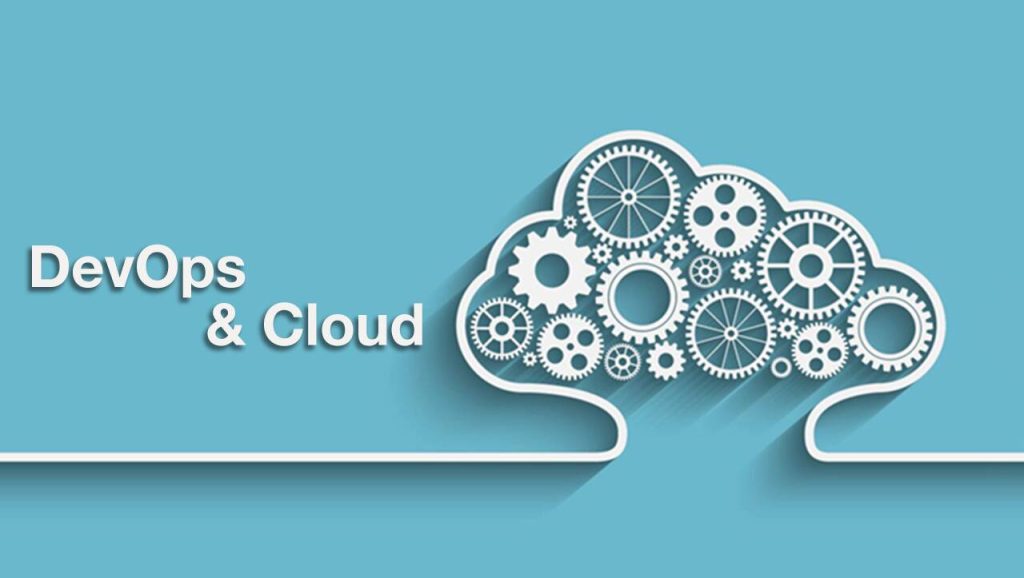
Organizations cannot ignore digital transformation to sustain in this rapidly changing world. DevOps and cloud computing have become essential for organizations to achieve digital transformation and increase competitiveness.
DevOps vs. Cloud Computing
cloud computing and DevOps serve different purposes—DevOps improves processes, while cloud computing enhances technology and services. Organizations need to understand how combining cloud and DevOps can drive their digital transformation goals.
Impact of DevOps & Cloud Together
According to a recent report, individual implementation of DevOps or cloud can accelerate software delivery by 50%, while together, they exhibit an acceleration of 81%. It is clear that cloud and DevOps together can improve productivity. Let’s learn how they both together can help to improve your business.
Cloud and DevOps Together Help to Accelerate Software Delivery
When your applications are already moved to the cloud, you can modernize the hosting platform to take advantage of the latest cloud services. Most private and public IT service providers support DevOps on their platforms. DevOps automation is one of the efficient approaches that help to reduce the complexity and labor associated with routine jobs like maintenance tasks. DevOps approach also allows on-demand scalability that helps to streamline software delivery and deployment. As a result, you can quickly minimize the expenses needed for over-provisioning resources common in on-premise environments. Overall, these improvements help free up more time and energy for innovation and value-adding work that will enhance customer satisfaction.
In short, cloud DevOps tools enable your developers to focus more on development tasks and your operations staff to concentrate on their responsibilities instead of dealing with extensive unplanned work. If your development and operations teams work haphazardly, they will struggle to manage large unanticipated tasks, which will delay the entire delivery process.
Cloud and DevOps Together Can Improve Operability
Adopting both can help organizations improve their operational activities by making them more accurate and focused. When ready to scale up their business, start-up organizations can benefit from the combination of cloud and DevOps.
Partnering with reputed and trusted cloud services providers will help you achieve operational excellence, security, reliability, cost-optimization, and performance efficiency. With the expert guidance of managed IT services providers, you can incorporate and operate your cloud effectively. They can also guide you in taking decisions and priorities related to DevOps-led processes. With the help of a Managed service partner, you can reconfigure systems in a targeted and systematic way to improve operability that will support and accommodate your future growth plans.
Cloud and DevOps Together Can Help to Lower the Cost of Ownership
Cost optimization is always a top priority for all Chief Technology Officers (CTOs). As cloud adoption is rising, the IT budget is also increasing simultaneously. In such situations, DevOps can help you with cost optimization.
In traditional on-premise server environments, businesses must be ready for their maximum requirements. Consequently, they have to invest in over-provisioned on-premises servers to ensure adequate capacity for peak demand. Traffic spikes can occur annually, monthly, or even more frequently (such as weekly) depending on the industry. Meanwhile, during the rest of the time, a significantly smaller quantity of resources is needed to operate the business. Essentially, you end up paying for peak capacity every day throughout the year, which proves to be quite expensive. Moreover, even turning off servers during non-peak times is not very cost-effective. Although turning off servers can reduce power costs, you still incur expenses for rack space, network provisioning, and software licenses.
The DevOps approach allows you to take full advantage of the rapid elasticity cloud computing offers. With automation of provisioning, application deployment, and orchestration, you have to pay for the exact capacity you need at a particular time. In this way, you can minimize IT expenses.
How Do You Combine DevOps and Cloud?
Along with cost-optimization, both approaches help you optimize your software development lifecycle (SDLC) and develop high-quality software quickly and efficiently. To take advantage of cloud and DevOps together, you should adhere to the best practices:
Keep Track of Your Progress
In your software development lifecycle, you must describe all the processes and workflows and identify the person responsible for each task. You have to look for ways to make cloud development processes more efficient and faster, such as automated or enhanced processes. When following an agile methodology, you should aim to create short sprints while developing an application.
Make Use of a Fully Automated CI/CD Workflow
Automating software building and delivery can be achieved using CI/CD solutions for streamlined pipelines. Your cloud and DevOps infrastructure together will be more efficient and agile by integrating CI/CD automation with your existing system.
Reduce the Feedback Loops
An automated testing facility helps in finding bugs in your code. It just reduces your task by half, and being automated, there is no chance of errors. At the same time, the concerns are reported to the appropriate teams, which helps in quick resolve. This is an efficient way to speed up the feedback process — automated issue detection, reporting, and response technologies allow for faster project completion.
Create a Team Atmosphere
To properly utilize cloud and DevOps together, your staff needs to know about both concepts before providing them with the cloud DevOps tools. To do this, it is necessary to provide essential training, eliminate information silos, promote the exchange of innovative ideas, upgrade with needed skills, and consider failures as learning experiences.
Conclusion
Incorporating DevOps along with cloud adoption will help organizations not only to save money and accelerate innovation but also helps to improve work culture. A modern and efficient work environment makes your staff happier and more motivated. Employees become more enthusiastic and energized by their work. This positive approach brings a willingness toward change, acceptance of newer things, and growth. With the help of managed IT service providers, your cloud and DevOps journey can be easy and more productive.